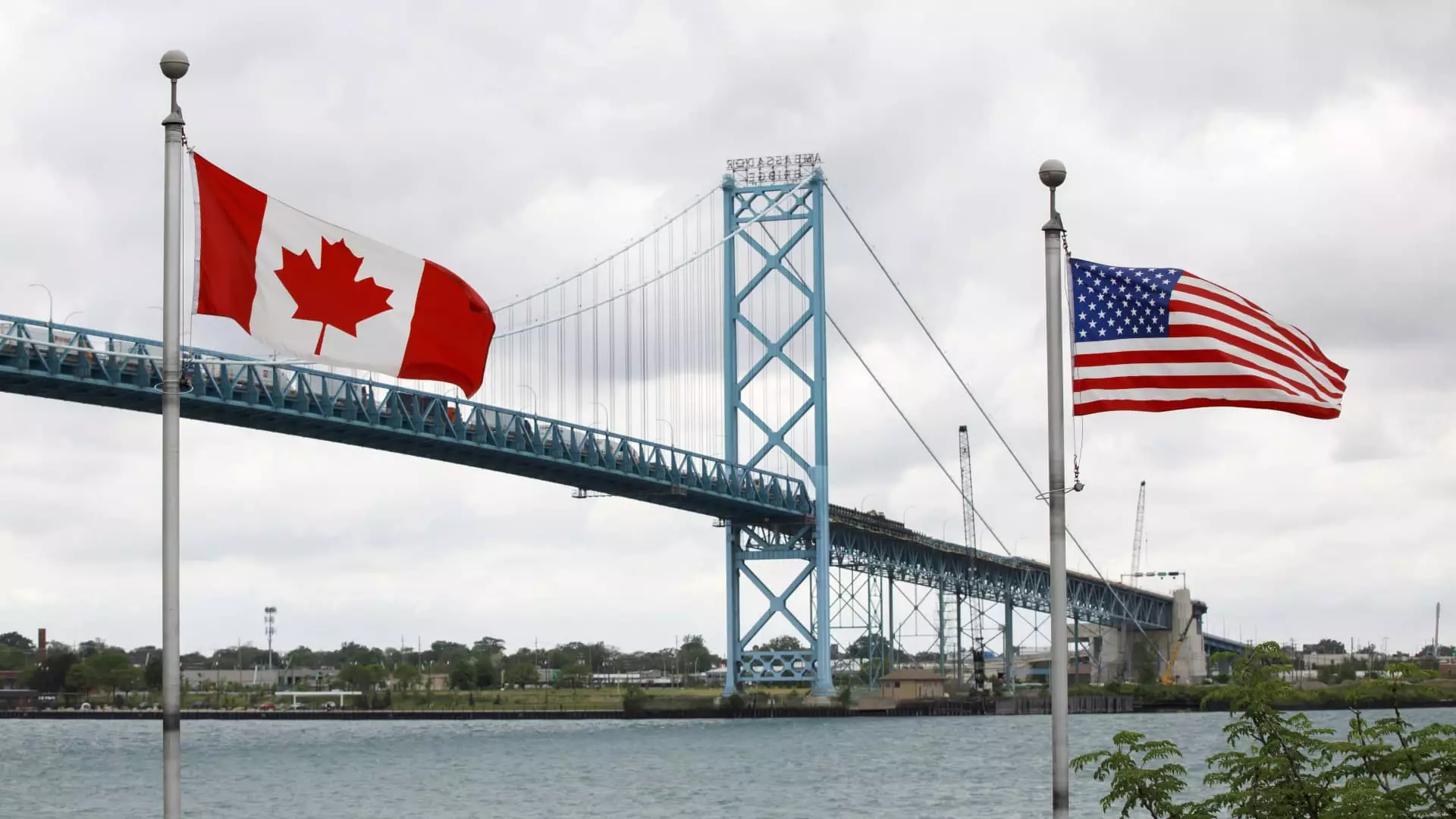As discussions ramp up around President-elect Donald Trump’s plans to implement a substantial 25% tariff on automotive imports from Canada, concerns are mounting over the repercussions this bold policy could wield on the North American automotive landscape. The epicenter of this potential crisis lies in Ontario, Canada’s industrial heartland, where a cluster of automotive manufacturers—such as Ford, General Motors, Stellantis, Toyota, and Honda—operate predominantly to serve the lucrative U.S. consumer market. With the stakes set high, it is crucial to dissect how these tariffs could affect not only Canadian jobs but also those within the U.S., alongside sparking signs of uncertainty in an already fragile post-pandemic recovery.
The Backbone of Canada’s Automotive Industry
Ontario stands as a formidable pillar in the North American automotive industry, with a production output of 1.54 million light-duty vehicles in the previous year, primarily directed toward American buyers. This relationship forms a robust supply network where parts and raw materials frequently cross the Canada-U.S. border multiple times in the manufacturing process. The imposition of tariffs threatens to disrupt this intricate web, forcing companies to reconcile potential heightened costs and production slowdowns that might ultimately lead to significant job losses. Ontario’s Premier, Doug Ford, has voiced strong opposition to this tariff plan, underscoring its detrimental ramifications on both sides of the border. His plea highlights that vehicles are built through collaborative efforts between Canadian and American manufacturers, benefiting the economies of both nations.
The economic dynamics between Canada and the U.S. cannot be overstated. For 17 states, Ontario serves as the foremost trading partner, emphasizing a balanced exchange that, without interruption, sustains jobs and investments in both territories. Recent data from DesRosiers Automotive Consultants reveals staggering figures—$23.5 billion in Canadian auto parts exports and $53.5 billion in light vehicle exports in 2023 alone. Such figures underline the critical nature of cross-border commerce, as a substantial 95.3% of Canada’s automotive exports are earmarked for the U.S. market. Any undue tariffs may distort this balance, leading to elevated vehicle prices ranging from $1,750 to potentially $10,000, igniting fears of stifled consumer demand and plunged sales across the industry.
The looming threat of tariffs introduces an additional layer of concern for OEMs (original equipment manufacturers) who may be compelled to pass on inflationary costs to consumers. This would inevitably lead to drastic fluctuations in vehicle prices, dampening demand at a precarious moment when the Canadian automotive industry begins to show signs of recovery post-pandemic. Moreover, if manufacturers are forced to cut costs in response to reduced sales, the fallout would likely manifest in rising unemployment figures—an outcome neither country can afford. This cascading effect highlights the interlinked fate of American and Canadian carmakers, proving that a tariff spat fueled by political rhetoric can have real-world consequences that resonate across the shared border.
Shifting Grounds: The Electric Vehicle Transition
As the industry grapples with potential tariffs, it’s also navigating an uncertain transition toward electric vehicles (EVs). With EV adoption lagging behind optimistic projections, notable Canadian manufacturing sites like Ford and Stellantis remain in limbo without clear vehicle production plans. Alongside this, Trump’s intention to dismantle current EV purchase subsidies augments the challenges faced, stalling momentum toward a greener automotive future. The interplay of these factors poses questions not only about the vitality of traditional automotive production but also about how Canada can secure its position in an emerging market dominated by electric innovation.
A Call for Cooperative Trade Relations
At a time when protectionist sentiments threaten the harmony established between Canada and the U.S., there is a reiterated call for constructive collaboration. Premier Ford has accentuated the necessity for both nations to redirect their focus on shared competitors like China and Mexico, rather than jeopardizing the relationship with their closest ally. Instead of erecting trade barriers, the emphasis should shift to creating synergistic alliances that bolster economic growth and job sustainability on both sides.
The road ahead is precariously positioned between protectionism and partnership. As the automotive industry seeks to rebound from pandemic-induced volatility, the uncertainties tied to potential tariffs add a cloud of doubt that may stymie its recovery efforts. The importance of addressing these issues through dialogue and collaboration cannot be overstressed. It’s essential to forge alliances that position both Canada and the U.S. as leaders in the evolving automotive landscape—one that hinges not solely on production numbers but on sustainable, cooperative practices that serve the interests of both nations in an interconnected world.

